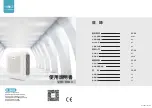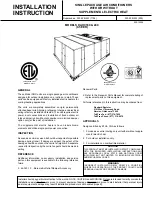
CAT 258 • REBEL APPLIED ROOFTOP 30 www.DaikinApplied.com
Application Considerations
Acoustics
There are many sound sources in rooftop systems. Fans,
compressors, condenser fans, duct take-offs, etc., all generate
sound. Good acoustical design is critical for any installation
and should start at the earliest stages in the design process.
The common sound paths for rooftop equipment must be
addressed are:
•
Radiated sound through the bottom of the unit ( air
handler and condensing unit section) into the space
•
Radiated Sound to the property line
•
Structure- borne vibration from the unit into the building
•
Airborne sound through the supply air and return air
ductwork.
Some basic guidelines for good acoustical performance are:
•
Provide proper structural support under all areas of the
unit
•
Locate equipment over less sensitive areas like corridors,
toilet facilities or auxiliary spaces and away from office
spaces, conference rooms and classrooms.
•
Design duct systems to minimize turbulence.
•
Place acoustical material in the area directly beneath the
condensing section.
•
Apply for vibration isolation curb systems for sound
transmission critical applications.
•
Account for low frequency duct breakout in system
design. Route the first 20 ft. of rectangular duct over
non-sensitive areas and avoid large duct aspect ratios.
Consider round or oval duct to reduce breakout.
Contact your local Daikin Sales Representative for equipment
supply, return and radiated sound power data specific to your
application.
Ductwork Considerations
A well-designed duct system is required to allow the rooftop
equipment to provide rated performance and to minimize
system resistance and sound generation. Duct connections to
and from units should allow straight, smooth airflow transitions.
Avoid any abrupt changes in duct size and sharp turns in the
fan discharge. Refer to the ASHRAE Applications Handbook
for specific guidelines relevant to rooftop equipment.
The return duct path is the most often overlooked. A section
of return duct is required to avoid “line of sight” to the return
air opening and to provide attenuation of return air sound.
Install an insulated tee with a maximum duct velocity of 1000
to 1200 feet per minute. Extend the duct 15 feet to provide
adequate attenuation.
Summary of Contents for DPSA
Page 41: ......













































